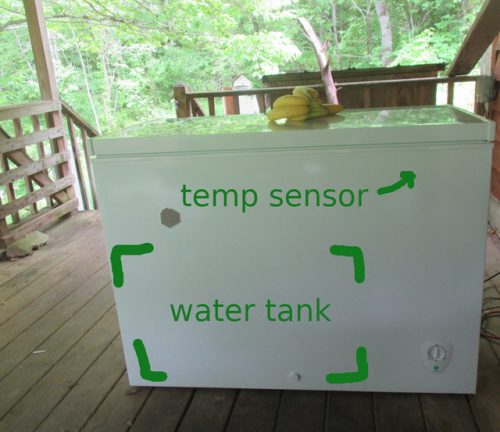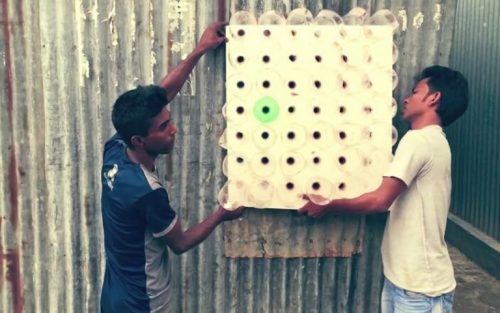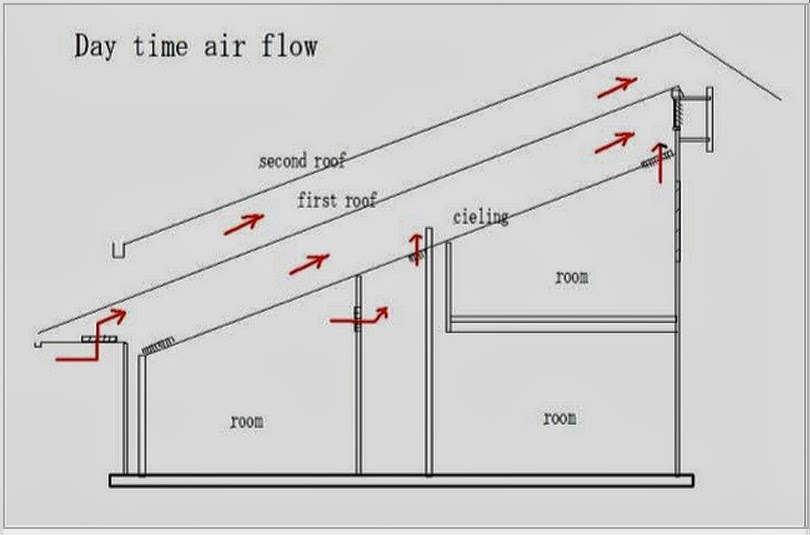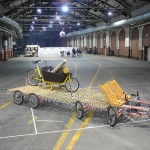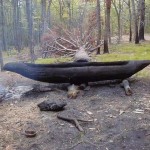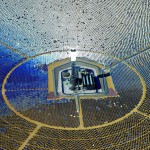Joey Hess has designed, built and tested an off-grid, solar powered fridge, with no battery bank. Using an inexpensive chest freezer with a few modifications, the fridge retains cold overnight and through rainy periods. The set-up consists of a standard chest freezer, an added thermal mass, an inverter, and computer control. He writes: [Read more…]
Off-Grid, Solar-Powered, Zero-Battery Refrigerator
Evaporative Air Conditioning
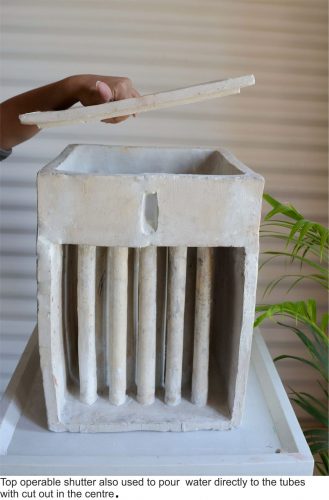 Evaporative coolers have been known to purveyors of low-cost, sustainable technologies for years. Without the need for electricity, these cold containers have kept produce fresh from farms to tables, protecting against post-harvest losses in the field and food spoilage in hot pantries worldwide.
Evaporative coolers have been known to purveyors of low-cost, sustainable technologies for years. Without the need for electricity, these cold containers have kept produce fresh from farms to tables, protecting against post-harvest losses in the field and food spoilage in hot pantries worldwide.
Now the concept has been applied to air conditioning. Manoj Patel Design Studio in Vadodara, Gujarat (India) has built evaporative air conditioners that can cool a room for days on a single tank of water. The studio designs new products from recycled materials, and they built their air conditioners from ceramics and stone, integrating them with potted plants. By filling rows of ceramic tubes with water, the prototypes maximize their surface area for optimal evaporation while retaining a small footprint.
Read more: This Air Conditioner for Homes and Offices Uses No Electricity, Engineering for Change. Previously: How to keep beverages cool outside the refrigerator: the botijo.
Zero Electricity Air Cooler
Over 70% of Bangladesh’s population live in corrugated tin huts across the countryside. During the long summer months, temperatures reach up to 45° Celsius, making these huts unbearable to live in.
To address the issue, Grey Dhaka teamed up with volunteers from Grameen Intel Social Business Ltd to create the Eco-Cooler – a zero electricity air cooler, which uses re-purposed plastic bottles cut in half and put into a grid, in accordance to available window sizes.
Based on wind direction and airflow pressure, the Eco-Cooler has succeeded in decreasing the temperature in tin huts by up to 5° Celsius. After initial tests, blueprints of the Eco-Cooler were put up online for everyone to download for free.
Thanks to Adriana Parra.
A Passively Cooled House in the Tropics
Kotaro Nishiki built a passively cooled home in Leyte Philippines at 11 degs north latitude that incorporates a number of unique cooling features that allow the home to be cooled passively and without electricity…
In this area, most homes are constructed of concrete, and the concrete structures tend to absorb solar heat during the daytime, and then retain that heat through the night making the homes uncomfortable.
Kotaro’s design is centered on eliminating these daytime solar gains. He keeps the whole house shaded using these techniques:
- The south facing single slope roof has on overhang on the south that keeps the south wall in shade most of the day.
- The north side of the house is shaded by an roof extension sloped down to the north that shades the north side of the house most of the day.
- The roof is double layered with airflow between the well spaced layers. This greatly reduces solar heat gain through the roof.
- The east and west walls of the house are double wall construction with a couple feet between the walls. The shading that the outer wall offers plus airflow between the double walls keep the wall temperatures low.
- In addition, he has worked out ways to take advantage of the night
temperature drop and to use thermal mass on the basement to provide some
cooling.
More: A unique, passively cooled home in the Tropics (Build-It-Solar), Passive Solar House in Tropical Areas (Kotaro Nishiki). Build-It-Solar has more examples of passively cooled houses.
How to Keep Beverages Cool Outside the Refrigerator
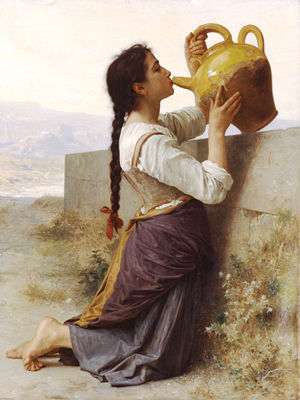 In the industrialized world, we know only of one way to cool beverages: place containers in refrigerators. This practice, which occurs on a massive scale, is utterly dependent on fossil fuels.
In the industrialized world, we know only of one way to cool beverages: place containers in refrigerators. This practice, which occurs on a massive scale, is utterly dependent on fossil fuels.
However, people obtained the same result much more sustainably before the advent of the Industrial Revolution. In hot, dry climates, we used porous earthenware jugs that were not only re-usable, but also kept water cool by taking advantage of natural energy sources.
The best known example is the Spanish ‘botijo’, an unglazed ceramic container that cools beverages by evaporation. Similar drinking containers can be found in other Mediterranean countries, as well as in Mexico (where it is known as a ‘búcaro’) and on the Indian subcontinent (where it is called a ‘ghara’, ‘matka’ or ‘suhari’).
The ceramic water cooler probably originated in the Indus Valley Civilization, which would make it 5000 years old.
India’s Ancient Stepwell Architecture Cools Modern Building
“At the height of summer, in the sweltering industrial suburbs of Jaipur, Rajasthan in north-west India, where temperatures can hit 45C Pearl Academy of Fashion remains 20 degrees cooler inside than out, by drawing on Rajasthan’s ancient architecture. While the exterior appears very much in keeping with the trends of contemporary design, at the base of the building is a vast pool of water — a cooling concept taken directly from the stepwell structures developed locally over 1,500 years ago to provide refuge from the desert heat.”
Read more: Ancient ‘air-conditioning’ cools building sustainably.
